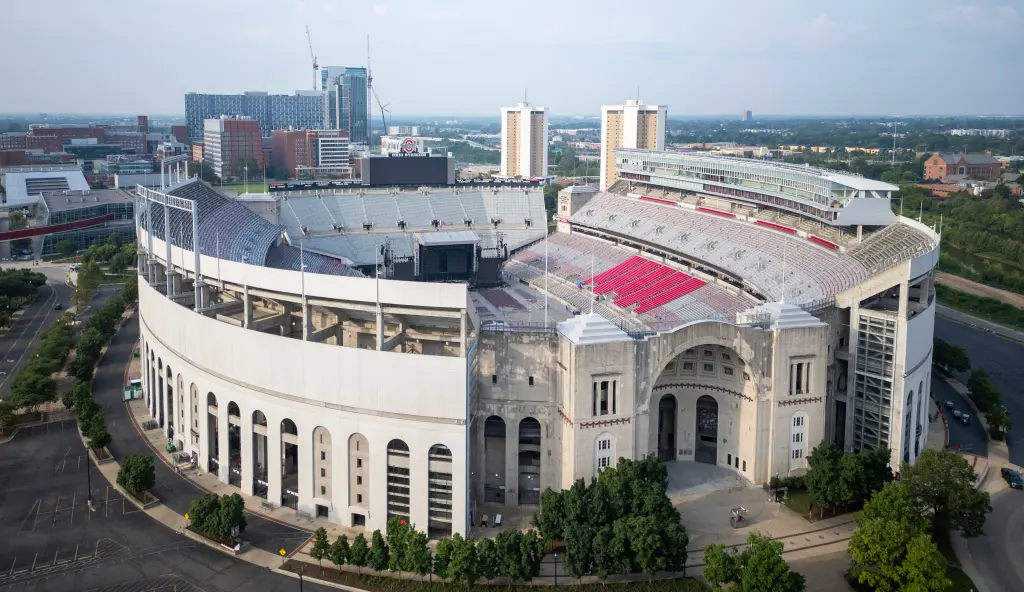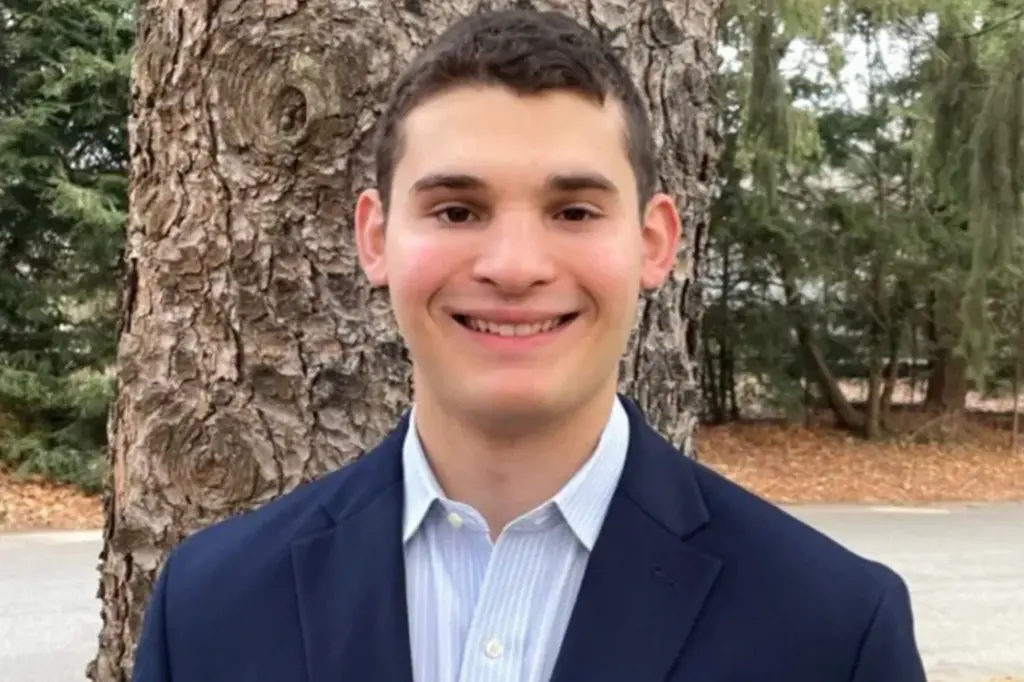Tragic Details Emerge: 19-Year-Old Ohio State Student Died by Suicide Inside University’s Iconic Football Stadium, Officials Confirm
The Ohio State University community is mourning the loss of 19-year-old student William Meyers, whose death inside the school’s legendary football stadium in September has now been officially ruled a suicide. According to a report from the Franklin County Coroner’s Office, Meyers, who was from Fairfield, Connecticut, died from injuries sustained after jumping from a significant height within the structure of Ohio Stadium in Columbus, Ohio.

The ruling brings heartbreaking closure to a mystery that has hung heavily over one of the largest universities in the country. When Meyers’ body was discovered inside the “Horseshoe,” as the stadium is affectionately known, in the early hours of September 3, details were scarce, and speculation quickly spread across campus. For weeks, friends, classmates, and family members were left without answers as the investigation unfolded quietly.
Meyers was described by those who knew him as bright, driven, and kind — a young man with a promising future ahead. He graduated from Fairfield Ludlowe High School in Connecticut, where he was known for his academic excellence and dedication to his studies. Friends recalled his easygoing personality and warm humor, saying he had a way of making people feel comfortable in his presence. “Will was one of those people who just made life lighter,” one former classmate told local media. “He was funny, smart, and genuine. No one ever expected something like this.”
The autopsy report, released by the Franklin County Coroner’s Office, revealed that the cause of death was blunt force trauma consistent with a fall from height. Toxicology tests were performed, but officials stated that no substances were found that could have contributed to his death. The coroner’s findings confirmed what investigators and university officials had quietly suspected for weeks: that Meyers took his own life.

Ohio State Police initially received a call around 10:30 a.m. that morning about an unresponsive individual inside the stadium. First responders arrived quickly, but Meyers was pronounced dead at the scene. University officials later confirmed that he was a student enrolled at OSU but declined to provide additional details at the time, citing respect for the family’s privacy.
For many on campus, the news was both shocking and deeply saddening. Ohio Stadium, home to the Buckeyes football team and one of the most recognizable landmarks in college sports, is a place of pride, energy, and celebration. To hear of a student’s death within its walls, especially under such tragic circumstances, struck an emotional chord across the university.
In the days following his death, the university released a brief statement expressing condolences and reminding students of available counseling services. “Our thoughts are with the family and friends of William Meyers during this incredibly difficult time,” the statement read. “We encourage anyone in our campus community who is struggling to reach out for support.”
Meyers’ death has also reignited conversations about student mental health on college campuses nationwide. Ohio State University, like many large institutions, has faced growing challenges in addressing the rising rates of anxiety, depression, and suicide among students. According to the Centers for Disease Control and Prevention (CDC), suicide remains the second-leading cause of death among individuals aged 15 to 24 — a statistic that underscores the urgency of mental health awareness and accessibility.
Peers of Meyers have spoken out about the pressures that many college students face, especially those navigating the demands of rigorous academics, financial burdens, and the transition to independent living. “College can be overwhelming,” said an Ohio State sophomore who attended a candlelight vigil for Meyers in late September. “You feel like you have to hold everything together, and sometimes people don’t realize how much someone is struggling.”
In the weeks after his passing, students gathered outside the stadium with candles and handwritten notes, laying flowers near the entrance gates in silent tribute. Messages of remembrance poured in from across the campus — from professors, fraternity brothers, and fellow students who wanted to honor the life of a young man who, as many described, “had so much more ahead of him.”
Meyers’ family, in a statement shared by local news outlets, thanked the Ohio State community for their outpouring of love and compassion. “We are heartbroken by the loss of our beloved William,” the statement read. “He was kind, curious, and full of life. Our hope is that his story encourages others who are struggling to seek help and know they are not alone.”
Friends from his hometown in Fairfield have also organized a scholarship fund in his memory, aiming to support students pursuing higher education — a way, they said, to honor Will’s dedication to learning and his commitment to helping others. “He always believed in lifting people up,” said a close friend. “If this scholarship helps even one student reach their dreams, it’s a way of keeping his spirit alive.”
The incident has led many to reflect on the importance of breaking the stigma surrounding mental health. Experts emphasize that open conversation and accessible support systems can make a life-saving difference. Dr. Lisa Sutton, a clinical psychologist who has worked with college populations, said the tragedy highlights a broader issue that universities must continue addressing proactively. “Students are under immense pressure today — academically, socially, financially,” she said. “Universities need to continue expanding mental health resources and making sure students know help is available before they reach a crisis point.”
Ohio State has taken several steps in recent years to improve its mental health infrastructure. The university offers individual counseling, group therapy sessions, and emergency crisis services through its Counseling and Consultation Service. Following Meyers’ death, administrators reiterated their commitment to mental health awareness and prevention, encouraging students to use these resources without hesitation.
Beyond Ohio State, Meyers’ story has struck a chord nationwide, resonating with families who have faced similar heartbreak. Social media posts shared under his name became spaces for remembrance and reflection, with friends sharing photos of happier times — at school dances, on summer trips, or laughing in classrooms. Each post seemed to echo a shared message: that even those who appear strong and high-achieving can be silently battling inner pain.
In Fairfield, Meyers’ hometown, a local church held a memorial service that drew hundreds. The service, described as both tearful and hopeful, focused not only on mourning but also on celebrating the bright life he lived. “We remember William for his kindness, his humor, and his determination,” said one speaker. “He loved learning, loved people, and loved making others smile. Though his life was short, his impact was lasting.”
As Ohio State students prepare to enter the next semester, the memory of what happened at the Horseshoe remains a somber reminder of how fragile life can be. The stadium — usually filled with cheering fans — stands for many as a symbol of triumph and unity, but now also as a place touched by loss.
University officials have continued to remind the community of available resources for mental health support, including crisis lines and counseling centers. “We want every student to know there is help,” an OSU spokesperson said. “You do not have to face anything alone.”
The legacy of William Meyers, though marked by tragedy, has already begun to inspire others to speak up, to check on friends, and to take their own mental well-being seriously. “Sometimes people think reaching out for help is weakness,” one of his classmates wrote on social media. “But it’s actually the strongest thing you can do.”
As his family, friends, and community continue to grieve, many hope that his story will serve as a wake-up call — not just about the silent struggles young people face, but about the collective responsibility to listen, to care, and to act.
If you or someone you know is struggling with thoughts of suicide, you are not alone. Help is available. In the United States, you can call or text 988 to reach the Suicide and Crisis Lifeline, available 24 hours a day, seven days a week.


